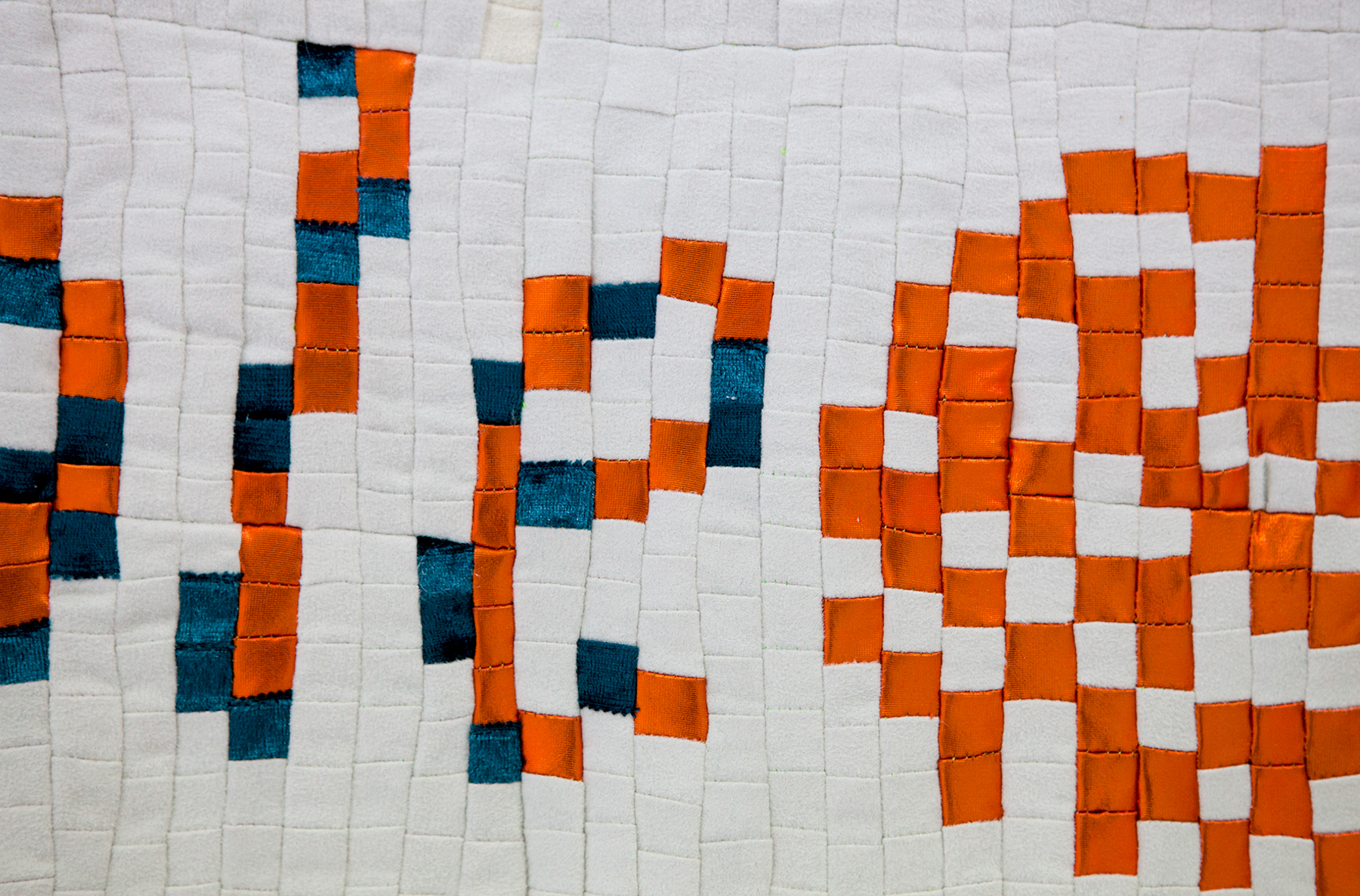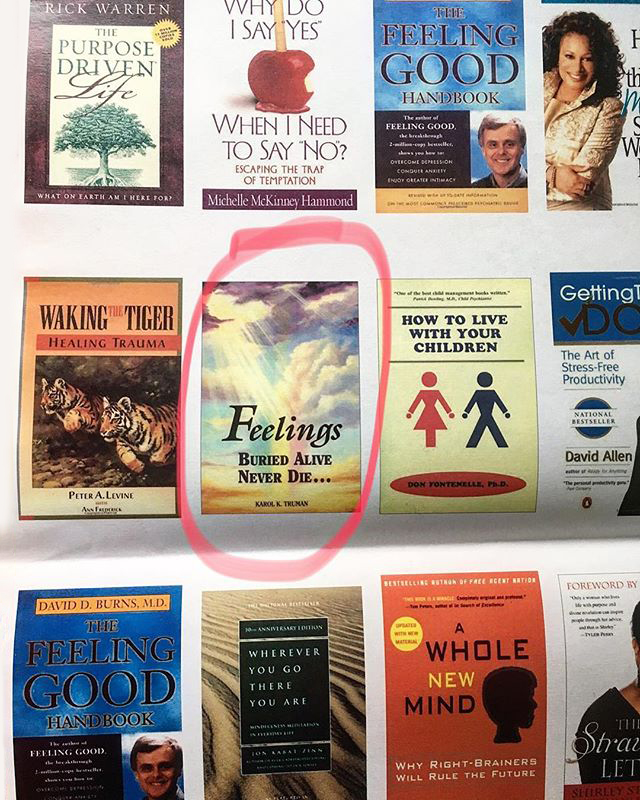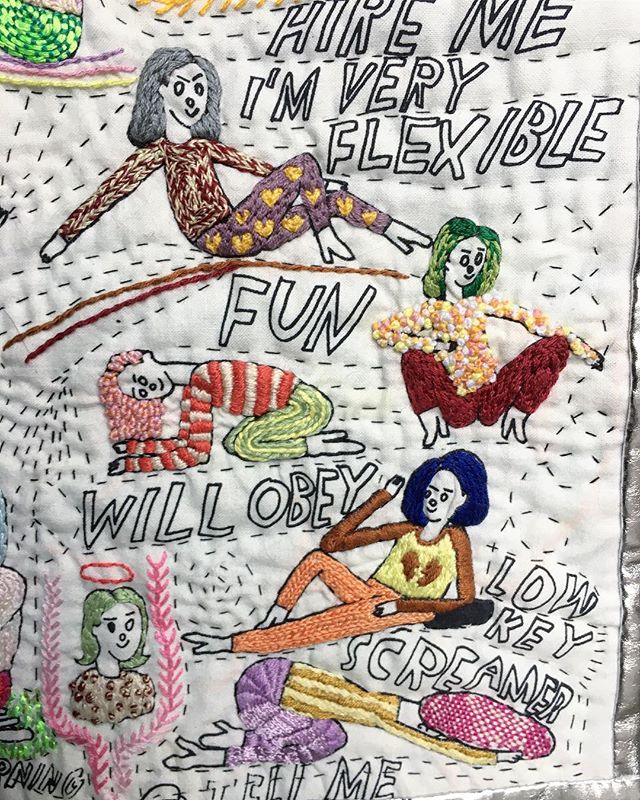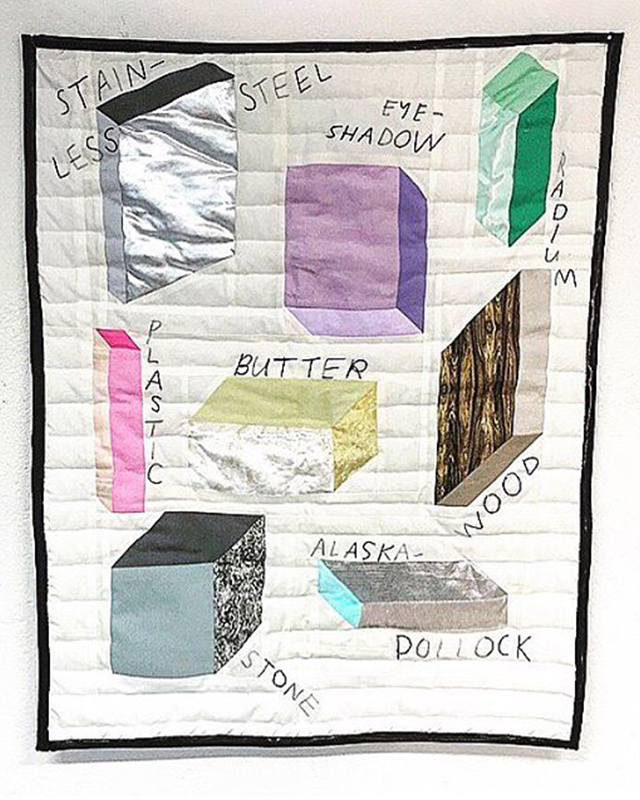Swedish artist Anna Nordström works with quilting, embroidery, sketching, stitching, and other textile work. Her playful approach to art and great sense of humor instantly bring a smile to the viewer’s face.
Anna explores both the past and the present; she takes inspiration from history and archeology as well as the commercial society we live in nowadays. In a market-driven world where everything is mass produced and quickly delivered, Anna takes her time, works with hands and makes her craft unique. Techniques she uses are ancient but deal with current times.
Patterned dollar bills, silly commercials, corporate logos, and quotes from self-help books are just a few elements that makes Anna’s work so lovable. Anna is a co-founder of artists’ collective “The New Women’s Group,” creating feminist art and spreading empowering messages through art, exhibitions, seminars, and workshops. The artist graduated from the University of Arts, Crafts, and Design (Konstfack) and is based in Stockholm.
We sat down with Anna to discuss her inspiration, working with textile, and sustainability.
Can you tell us a bit about yourself? When did you begin working with the textiles?
I’m from Gävle. I was born there in 1984 and lived there until 2007. I decided to become an artist when I was a child. During my third and last year at a preparatory art school (folkhögskola), I started to embroider my drawings. I felt an instant gratification. I remember watching “Dirty Dancing” on my VCR and embroidering “SKÄRP DIG” (“get a grip”) in cross stitches a hundred times, feeling great. That was the door into working with textile techniques and materials. The experience of translating pen and paper into needle and fibre made me apply for the textile program at Konstfack, Stockholm. I studied there for five years, including one semester at MICA in Baltimore, from 2007 to 2012.
 |  |
 | |
How do you choose what to put on your quilts?
Most of my inspiration comes from popular culture like TV, the internet, celebrity culture, ads, social media, YouTube and so on. I choose quickly and go with what evokes a feeling in me. Humor often guides me. Some of them are straight up titles and covers from self help books, like “TIME TACTICS FOR VERY SUCCESSFUL PEOPLE” or “MAKE PEOPLE LIKE YOU.”
Can you talk about your process?
Working repetitively with my hands is what keeps me sane. It’s a good place to be: in the middle of time-consuming work, with hours behind you and hours in front of you. I work both fast and slow. I draw the sketch in a hurry, I make the choices quickly, grab whatever fabric I have lying around; then the stitching takes time. I do become better and faster each day, even if I don’t try to. Repetition allows the mind wander free.
I have a close relationship with my sketchbooks and pens; I try to keep that conversation going. I take notes, draw, write down slogans or words I come across, plan future works, and collect ideas. I always bring a sketchbook so I’m never bored and always have someone to talk to.
I do a certain type of (big) work in my studio, often using the sewing machine. I do other types of work at home, like embroidery and quilting. I have tried to make textile work into a kind of “lifestyle”, but I love stitching and sewing, and even if I don’t have the energy to go to my studio, I still ”work” at home, while watching TV or listening to music with my boyfriend. I aim to always have something in my hands. And that’s how I get things done even if it is slow.
 |  |
Some would say that embroidery, quilting, and sewing are activities of the past. How do you keep your work contemporary?
Physically feeling and seeing materials take shape in front of you – not on a screen but actually in your hands – makes you feel some type of way. I think it’s deeply human to want to connect to that feeling. It is more necessary today than ever in order to understand what powers we as members of society have in our hands. There is a material world apart from life on a screen. Working with your hands is a way of understanding what it is to live your life on this planet.
 |  |
 | |
You’ve made patchwork from old sweaters. Do you think reusing material is important?
I have a hard time throwing away materials; I save everything. The patchwork from old sweaters came about after cleaning out my closet. It felt right to take some responsibility for my consumption and my trash. But also, I often buy the material I want; then sustainability isn’t my priority, I just go for a price I can afford since I buy 3-5 meters of fabric.
The textile industry is very dirty and to be involved in it is to be a predator. To shop is to be a predator. But since I am a one-person business, I don’t feel the need to be environmentally sustainable. I think that’s something for the multi-billion textile companies like H&M and IKEA. They are producing on a level that I obviously never will. That’s where we need to start with sustainability.
 |  |
You were member of Den Nya Kvinnogruppen (The New Women’s Group). Can you tell more about the group and its goals?
It was a project that came out of frustration with the idea of The Artist as a Lonesome Male Genius. We formed in 2013 with the aim of developing feminist strategies and promoting the feminist craft. We wanted to work together instead of being competitors.
The group existed for five years. We worked on exhibitions in different areas and cities, and we also did workshops and seminars where we connected with an audience around material-based art and feminist topics. We curated all of our own exhibitions, developed curriculum, wrote texts, and published pamphlets to accompany our group shows.
You often use corporate logos, advertisements, self-help books, dollar bills, etc. in your art. Why is that? Does it have any particular purpose?
The techniques I use are ancient, but the subject matters are current. Most of my inspiration comes from both the past (archeology, history) and the commercial society in which I live. I try to mix them and find a red thread that connects the two worlds.
The corporate logos, advertisements, self-help books and dollar bills are all images of what we as a society value and praise. Through mixing them with textile techniques and materials I can tweak their meaning.

How do humor and irony enrich your art? How do they reflect your personality?
Humor is a powerful force. It’s how I communicate with others and how I deal with the world. It has therapeutic powers similar to working with your hands. I watch a lot of sitcoms and romantic comedies while working. Humor and sadness are sisters, and there’s a lot of sadness in this world.
Which artists have had the biggest impact on you and why?
I’ve been hugely impacted by Cezanne and Matisse because painting is my first love. When traveling, I like visiting museums to see the paintings; it’s like meeting old friends and learning something new about them every time. Aside from French painters, I am very inspired by Mika Rottenberg and Rosemarie Trockel because they use material and humor in perfect symbiosis.
What are you working on currently?
I am now working on new pixel patchworks for an upcoming exhibitions at Hangmen Projects and DOT DOT DOT group exhibition. I’m also working on something secret for Design Week 2020.
Where can people find or buy your art?
People can find me on Instagram. My website is under construction.

